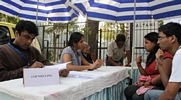Erb’s palsy is a preventable birth defect that affects the shoulder, arm and hand. It is one of several possible brachial plexus injuries caused by shoulder dystocia during childbirth; it is usually preventable. Proper monitoring and detection of risk factors during pregnancy gives health care providers the opportunity to take preventative measures. Erb’s palsy is considered a “birth injury ” and is an example of medical malpractice.
Shoulder Dystocia
Shoulder dystocia occurs during childbirth when a baby’s shoulder can get wedged behind the mother’s pubic bone. Pushing or pulling the baby out of the mother can stretch or tear the nerves of the brachial plexus. The brachial plexus is bundle of nerves between the neck and shoulder and controls the arm and hand.
With proper pre-natal care, the conditions which indicate a likelihood of developing shoulder dystocia can be detected, and the birth injuries that cause Erb’s palsy can be prevented. Risk factors that doctors should watch for include:
· Obese mother
· Above-normal weight gain during pregnancy
· Advanced age of mother
· Short or small mother
· Flat, contracted or exceptionally small pelvis
· Diabetes in the mother
· Large baby
· Overdue baby
· Prolonged labor
· Breech position
Preventing Erb’s palsy
When the risk factors are detected early enough, a planned C-section will prevent brachial plexus injuries. Sometimes shoulder dystocia is not detected in time to perform a C-section, or C-section is too dangerous. When this happens other methods can be used to deliver the baby safely and without injury. Some of these methods are:
· Suprapubic pressure, using pressure from the outside of the mother to reposition the baby
· Wood’s corkscrew, reaching in and rotating the baby to free the arm
· Removing the posterior arm from the birth canal
· Rolling the mother from her back onto all fours
Signs of Erb’s Palsy
Erb’s palsy can result in your child never being able to properly use an arm or hand. When caught early, medical treatment and physical therapy can sometimes reverse the damage. Symptoms and effects of Erb’s palsy include:
· Rotated arm
· Winged shoulder blade
· Flexed elbow
· Downward sloped shoulder
· Loss of feeling in shoulder, arm and hand
· Paralysis of shoulder, arm and hand
· Hand which does not function properly
· Atrophy of the deltoid, biceps, and brachialis muscles
· Shorter than normal arm
Treatment for Erb’s
If your child displays the symptoms of Erb’s palsy you should talk to a doctor right away. Your baby may recover spontaneous during the first three months of life, but you will probably be advised to perform range of motion exercises to help your baby recover. Many babies will require surgery to repair the nerves, and continued physical therapy to regain use of the arm and hand.
The extent of recovery possible for your child will depend on the severity and type of injury, how quickly the problem was addressed, and of course, proper treatment.



